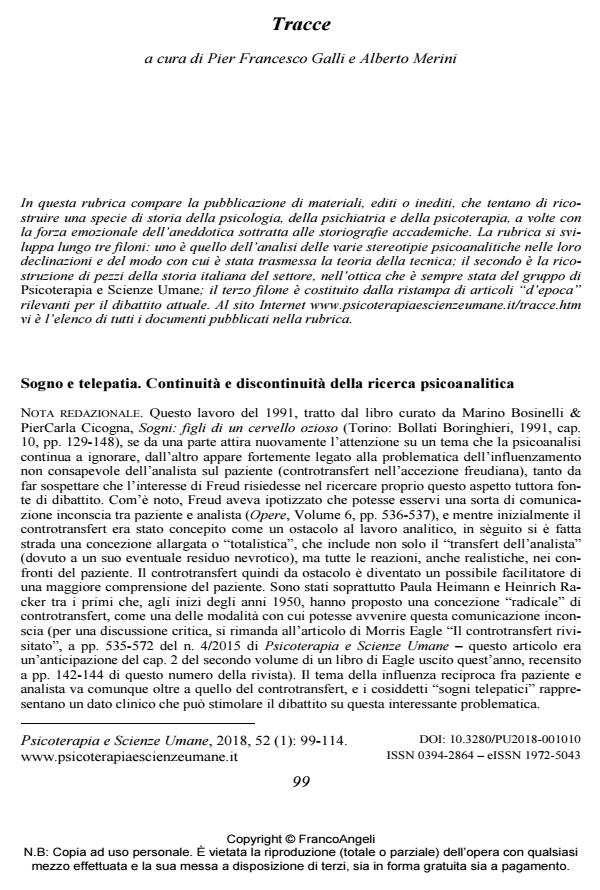Dreams and telepathy. Continuity and discontinuity in psychoanalytic research
Journal title PSICOTERAPIA E SCIENZE UMANE
Author/s Pier Francesco Galli, Alberto Merini, Marianna Bolko
Publishing Year 2018 Issue 2018/1
Language Italian Pages 16 P. 99-114 File size 117 KB
DOI 10.3280/PU2018-001010
DOI is like a bar code for intellectual property: to have more infomation
click here
Below, you can see the article first page
If you want to buy this article in PDF format, you can do it, following the instructions to buy download credits

FrancoAngeli is member of Publishers International Linking Association, Inc (PILA), a not-for-profit association which run the CrossRef service enabling links to and from online scholarly content.
After having reviewed Freud’s position on extra-sensory perception (ESP) and his disagreement with Ernest Jones, the explicit "resistance" of Freud and other psychoanalysts towards ESP phenomena and the general tendency to ignore them are discussed. Since ESP phenomena in psychoanalysis manifest themselves specially in dreams, four dreams - made in analysis by patients of Emilio Servadio, Alessandro Calvesi, Loredana Micati Zecca, and Elvio Fachinelli - are reported. These dreams seem to show that these patients were able to know aspects of their analysts’ life only through extra-sensory perception. These four dreams, and the relationship between dream and ESP, are discussed.
Keywords: ESP phenomena; Dream; Tracer element; Unconscious influence of the psychoanalyst; Resistance of the psychoanalytic community
- Psicoterapia quantistica: quali prospettive? Fulvio Frati, in Ricerca Psicoanalitica /2025
DOI: 10.4081/rp.2025.911
Pier Francesco Galli, Alberto Merini, Marianna Bolko, Tracce. Sogno e telepatia. Continuità e discontinuità della ricerca psicoanalitica in "PSICOTERAPIA E SCIENZE UMANE" 1/2018, pp 99-114, DOI: 10.3280/PU2018-001010